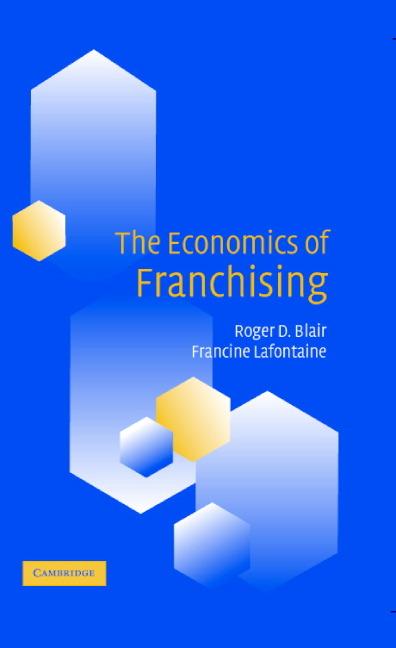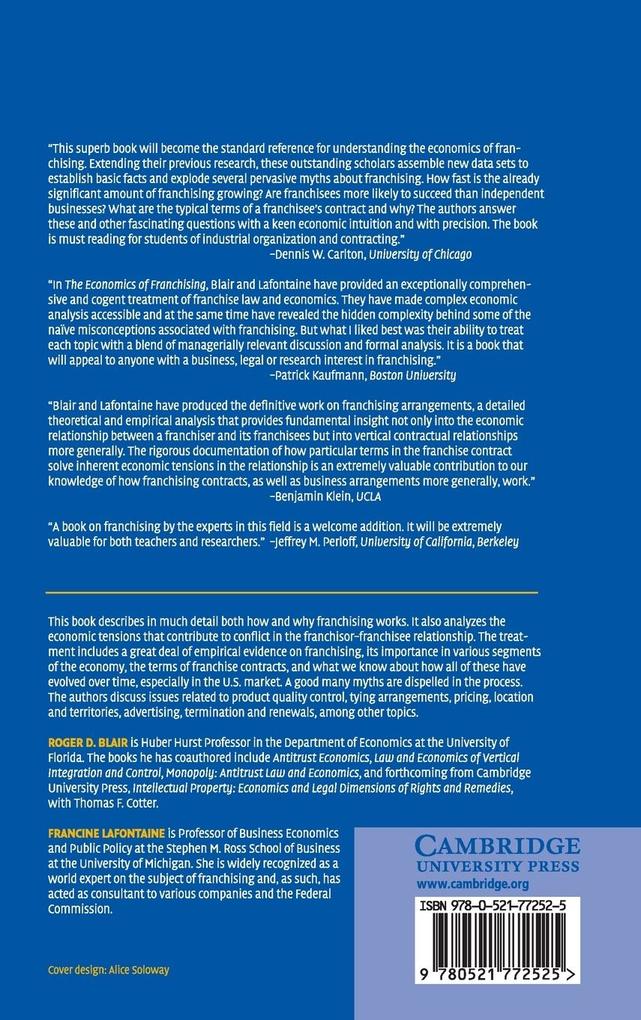It describes both how and why franchising works. It also analyses the economic tensions that contribute to conflict in the franchisor-franchisee relationship. The book includes a great deal of empirical evidence on franchising not available anywhere else. The economic analysis of the franchisor-franchisee relationship begins with the observation that for franchisors, franchising is a contractual alternative to vertical integration. Subsequently, various sources of tension between franchisors and franchisees are examined in turn, including issues related to product quality control, tying arrangements, pricing, location and territories, advertising, and termination and renewals.
Inhaltsverzeichnis
Preface; 1. Introduction; 2. Four popular misconceptions about franchising; 3. Franchise contracts; 4. Franchising, vertical integration, and vertical restraints; 5. Quality control; 6. Franchise tying contracts; 7. Vertical price controls in franchising; 8. Encroachment; 9. Advertising and promotion; 10. Termination and non-renewal; 11. Concluding remarks.











